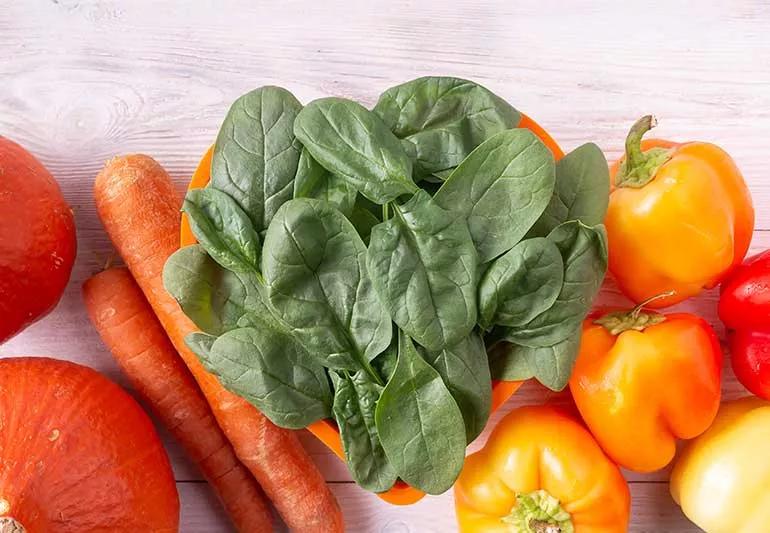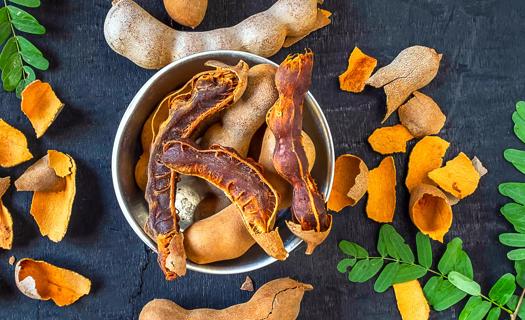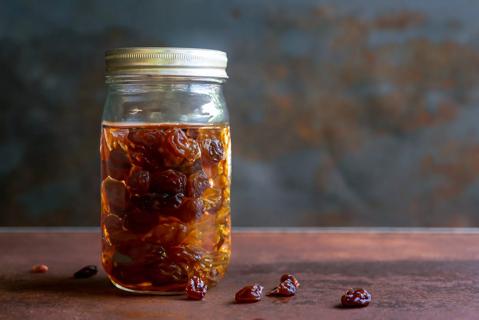Advertisement
Great for your body, these pigmented nutrients give fruits and veggies their vibrant hues

Have you ever wondered why flamingos are pink? It’s not actually their biological makeup; it’s their diet. These big, boldly colored birds eat a type of algae that their digestive system breaks down into red-orange carotenoid pigments. That red-orange hue then turns their feathers and skin a vibrant bright pink.
Advertisement
Cleveland Clinic is a non-profit academic medical center. Advertising on our site helps support our mission. We do not endorse non-Cleveland Clinic products or services. Policy
Errr … carote-what?!
Carotenoids are pigmented nutrients that are responsible for lending color not only to flamingoes’ favorite algae, but also to many of the rainbow-hued fruits and veggies you see in the produce aisle at your local grocery store.
Though you’re not a flamingo, you can also benefit from a diet rich in carotenoids. Registered dietitian Devon Peart, RD, MHSc, explains what carotenoids are, why they’re so important and what makes a colorful plate such a healthy one.
Just think of carotenoids as nature’s food coloring.
“Carotenoids are pigments that give red, yellow and orange fruits and vegetables their color,” Peart says. “They’re made by plants and algae, as well as some bacteria and fungi.”
There are more than 600 types of carotenoids, but they fall into two main classes that differ in molecular structure and in the colors they create. We won’t go into the super scientific molecular stuff, but here are the basics:
While artificial dyes and pigments can pose health risks, carotenoids have zero downsides. They’re essentially all healthy, all of the time. That’s because all carotenoids are antioxidants, which are a category of chemicals that occur naturally in foods.
If the word “chemical” makes you panic a little bit, take a breath: Chemicals can be a good thing. And antioxidants are a really good thing.
They help your body battle free radicals, which are unstable molecules that, if left unchecked, can lead to something called “oxidative stress.” Oxidative stress is responsible for all sorts of illness and disease.
“Antioxidants protect your cells from the damage that oxidation causes,” Peart explains. “They help reduce your risk of disease, including cancer and heart disease.”
Common carotenoids include:
Here are some of the ways these carotenoids give your body a boost:
Macular degeneration is an eye disease that contributes to vision loss. But two carotenoids, lutein and zeaxanthin (both xanthophylls), can help. They’re commonly found in leafy greens like spinach, kale, broccoli and collards.
“These antioxidants can help prevent macular degeneration or, if you already have it, they can help slow or halt its progression,” Peart says. “They also help protect against long-term exposure to blue light, which is the type emitted from screens — so get your video game-playing kiddos to eat their broccoli!”
Changing your diet can reduce your risk of cancer by as much as 40% — and a healthy diet is one that’s bursting with carotenoid-heavy foods. “All carotenoids are antioxidants, which protect cells and decrease your risk of certain cancers,” Peart states.
More research is needed to figure out exactly which carotenoids play a role and how, but research shows that they can lower your risk of:
Advertisement
For a top-notch ticker, incorporate carotenoids into your diet.
“In addition to their antioxidant effect, carotenoids are anti-inflammatory, which helps protect the heart and prevent blockages in the walls of the arteries,” Peart notes.
Research is ongoing about exactly how carotenoids help promote heart health, but they’re thought to be linked to a lower rate of cardiovascular disease and hypertension.
Your body turns some carotenoids into vitamin A, which keeps your immune system healthy. But in many parts of the world, people don’t get enough of this critical vitamin.
Importantly, vitamin A deficiency raises the risk of severe infection from the measles, which can be deadly, particularly in lower-income countries. The World Health Organization (WHO) recommends that children who have the measles be given vitamin A supplements to lower their risk of severe illness.
Carotenoids and vitamin A aren’t the same thing, but there’s a relationship between them. Your body can convert some carotenoids (aptly named provitamin A carotenoids) into vitamin A, which is involved in cell growth, organ function, immune support and eye health.
“The most ‘famous’ provitamin A carotenoid is beta-carotene, though there are a few lesser-known ones, too, like alpha-carotene,” Peart clarifies. “Your body converts these provitamin A carotenoids into vitamin A once they reach your gut.”
Provitamin A carotenoids are found in:
But you shouldn’t necessarily prioritize provitamin A carotenoids over their other carotenoid counterparts. They’re all healthy!
“Other carotenoids can’t be made into vitamin A but are still important,” Peart says. “Lycopene, for example, helps protect skin from sun damage and is found in watermelon and tomatoes. Others include lutein and zeaxanthin, which protect your eyes and are found mostly in leafy greens like kale and spinach.”
As you’ve probably guessed by now, lots of foods are rich in carotenoids. So, what should you be eating? Well … all of it!
“As with all nutrient-rich foods, variety is always best,” Peart shares. “Micronutrients, including carotenoids, are widely distributed amongst foods. If you always eat the same vegetables or the same fruits, you’ll get lots of certain nutrients and miss out on others.”
To get a balance of carotenoids, incorporate a variety of brightly colored fruits and veggies (including leafy greens) into your diet. Here are some foods that are high in carotenoids:
Advertisement
Here’s a helpful tip for preparing carotenoid-rich foods: Vitamin A is fat-soluble, meaning it’s absorbed along with fats. And you can use that knowledge to your advantage.
“You can help your body to better absorb vitamin A by first dicing or shredding your vegetables to increase their surface area, and then cooking them in a heart-healthy oil,” Peart advises.
Foods that are rich in carotenoids are rich in other nutrients, too — and the many health benefits they provide don’t all translate into supplement form.
“Food should always be our primary source of nutrients, rather than supplements,” Peart encourages, “unless there is a specific need that can’t be met with food.” Even then, a healthcare provider should be the one to give you the green light on supplements.
Instead of turning to supplements, turn to your local produce aisle, and start stocking up on a rainbow of healthy options — the more colorful your meals, the better!
Advertisement
Learn more about our editorial process.
Advertisement

Fiber-rich shirataki noodles may improve blood sugar, aid in digestion and help with weight loss

Reducing inflammation is key when you’re in a flare-up, but so is having a preventive nutritional plan in place when you’re not

The U.S. FDA prohibits HCG use without a prescription — and the hormone isn’t approved for weight loss at all

The glucomannan fiber in konjac can be good for your digestion, heart, weight loss and more

Eating this grain could help keep tabs on your appetite and protect against diabetes and cancer

With a sweet, tangy flavor, this tropical fruit is super versatile and high in antioxidants

Raisins have a number of health benefits when eaten — but raisin water probably won’t do much for you

Full of antioxidants and nutrients, apricots may boost your eye, skin, digestive and overall health

Your metabolism may torch 1,300 to 2,000 calories daily with no activity

A gentle touch in all the right places may help drain your sinuses